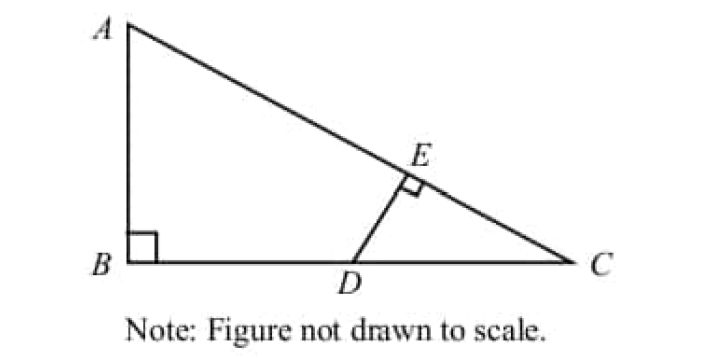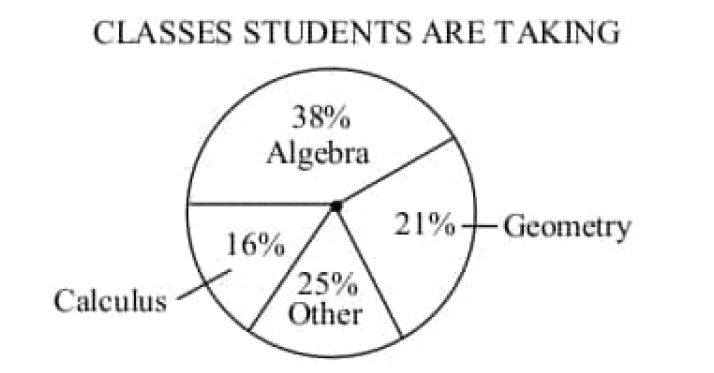EQUIVALENT RATIONAL NUMBERS WORKSHEET
Problems 1-6 : Write four rational numbers equivalent to the given rational number.
Problem 1 :
½
Problem 2 :
¾
Problem 3 :
⁻³⁄₅
Problem 4 :
⅞
Problem 5 :
3½
Problem 6 :
2.4
Problem 7 :
Express ⅚ as a rational number with denominator 30.
Problem 8 :
Express ⁻³⁄₇ as a rational number with denominator 28.
Problem 9 :
Express 0.4 as a rational number with denominator 25.
Problem 10 :
Express 1.03 as a rational number with denominator 1000.
Problem 11 :
Express ¹⁰⁄₁₄ as a rational number with denominator 7.
Problem 12 :
Express ²⁸⁄₃₅ as a rational number with denominator 5.
Problem 13 :
¾ two ˣ⁄₁₂
If the above two rational numbers are equivalent, find the value of x.
Problem 14 :
⁻⁵⁄₆ and ᵏ⁄₄₂
If the above two rational numbers are equivalent, find the value of k.
Problem 15 :
ᶻ⁄₂ and ¹²⁄₈
If the two rational numbers above are equivalent, find the value of z.

Answers
1. Answer :
To find four rational numbers equivalent to ½, multiply both numerator and denominator of the fraction ½ by 2, 3, 4 and 5.
½ x ²⁄₂ = ²⁄₄
½ x ³⁄₃ = ³⁄₆
½ x ⁴⁄₄ = ⁴⁄₈
½ x ⁵⁄₅ = ⁵⁄₁₀
The four rational numbers equivalent to ½ are
²⁄₄, ³⁄₆, ⁴⁄₈, ⁵⁄₁₀
2. Answer :
¾ x ²⁄₂ = ⁶⁄₈
¾ x ³⁄₃ = ⁹⁄₁₂
¾ x ⁴⁄₄ = ¹²⁄₁₆
¾ x ⁵⁄₅ = ¹⁵⁄₂₀
The four rational numbers equivalent to ¾ are
⁶⁄₈, ⁹⁄₁₂, ¹²⁄₁₆, ¹⁵⁄₂₀
3. Answer :
⁻³⁄₅ x ²⁄₂ = ⁻⁶⁄₁₀
⁻³⁄₅ x ³⁄₃ = ⁻⁹⁄₁₅
⁻³⁄₅ x ⁴⁄₄ = ⁻¹²⁄₂₀
⁻³⁄₅ x ⁵⁄₅ = ⁻¹⁵⁄₂₅
The four rational numbers equivalent to ⁻³⁄₅ are
⁻⁶⁄₁₀, ⁻⁹⁄₁₅, ⁻¹²⁄₂₀, ⁻¹⁵⁄₂₅
4. Answer :
⅞ x ²⁄₂ = ¹⁴⁄₁₆
⅞ x ³⁄₃ = ²¹⁄₂₄
⅞ x ⁴⁄₄ = ²⁸⁄₃₂
⅞ x ⁵⁄₅ = ³⁵⁄₄₀
The four rational numbers equivalent to ⅞ are
¹⁴⁄₁₆, ²¹⁄₂₄, ²⁸⁄₃₂, ³⁵⁄₄₀
5. Answer :
3½ is a mixed number. To get four equivalent rational numbers to 3½, convert 3½ to an improper fraction.
3½ = ⁷⁄₂
To find four equivalent rational numbers, multiply both numerator and denominator of the fraction ⁷⁄₂ by 2, 3, 4 and 5.
⁷⁄₂ x ²⁄₂ = ¹⁴⁄₄
⁷⁄₂ x ³⁄₃ = ²¹⁄₆
⁷⁄₂ x ⁴⁄₄ = ²⁸⁄₈
⁷⁄₂ x ⁵⁄₅ = ³⁵⁄₁₀
The four rational numbers equivalent to 3½ are
¹⁴⁄₄, ²¹⁄₆, ²⁸⁄₈, ³⁵⁄₁₀
6. Answer :
Convert the given decimal number to a fraction.
2.4 = ²⁴⁄₁₀
= ¹²⁄₅
To find four equivalent rational numbers, multiply both numerator and denominator of the fraction ¹²⁄₅ by 2, 3, 4 and 5.
¹²⁄₅ x ²⁄₂ = ²⁴⁄₁₀
¹²⁄₅ x ³⁄₃ = ³⁶⁄₁₅
¹²⁄₅ x ⁴⁄₄ = ⁴⁸⁄₂₀
¹²⁄₅ x ⁵⁄₅ = ⁶⁰⁄₂₅
The four rational numbers equivalent to 2.4 are
²⁴⁄₁₀, ³⁶⁄₁₅, ⁴⁸⁄₂₀, ⁶⁰⁄₂₅
7. Answer :
In the given fraction ⅚, the denominator is 6. To get denominator 30, we need to multiply 6 by 5.
To find a rational number equivalent to ⅚with denominator 30, multiply both numerator and denominator of the fraction ⅚ by 5.
⅚ = ⁽⁵ˣ⁵⁾⁄₍₆ₓ₅₎
= ²⁵⁄₃₀
8. Answer :
In the given fraction ⁻³⁄₇, the denominator is 7. To get denominator 28, we need to multiply 7 by 7.
To find a rational number equivalent to ⁻³⁄₇ with denominator 28, multiply both numerator and denominator of the fraction ⁻³⁄₇ by 4.
⁻³⁄₇ = ⁻⁽³ˣ⁴⁾⁄₍₇ₓ₄₎
= ⁻¹²⁄₂₈
9. Answer :
Convert the given decimal number to a fraction.
0.4 = ⁴⁄₁₀
= ²⁄₅
In the fraction ²⁄₅, the denominator is 5. To get denominator 25, we need to multiply 5 by 5.
To find a rational number equivalent to ²⁄₅ with denominator 25, multiply both numerator and denominator of the fraction ²⁄₅ by 5.
²⁄₅ = ⁽²ˣ⁵⁾⁄₍₅ₓ₅₎
= ¹⁰⁄₂₅
10. Answer :
Convert the given decimal number to a fraction.
1.03 = ¹⁰³⁄₁₀₀
In the fraction ¹⁰³⁄₁₀₀, the denominator is 100. To get denominator 1000, we need to multiply 100 by 10.
To find a rational number equivalent to ¹⁰³⁄₁₀₀ with denominator 1000, multiply both numerator and denominator of the fraction ¹⁰³⁄₁₀₀ by 10.
¹⁰³⁄₁₀₀ = ⁽¹⁰³ˣ¹⁰⁾⁄₍₁₀₀ₓ₁₀₎
= ¹⁰³⁰⁄₁₀₀₀
11. Answer :
In the given fraction ¹⁰⁄₁₄, the denominator is 14. To get denominator 7, we need to divide 14 by 2.
To find a rational number equivalent to ¹⁰⁄₁₄ with denominator 7, divide both numerator and denominator of the fraction ¹⁰⁄₁₄ by 2.
¹⁰⁄₁₄ = ⁽¹⁰÷²⁾⁄₍₁₄÷₂₎
= ⁵⁄₇
12. Answer :
In the given fraction ²⁸⁄₃₅, the denominator is 35. To get denominator 5, we have to divide 35 by 7.
To get a rational number equivalent to ²⁸⁄₃₅ with denominator 5, divide both numerator and denominator of the fraction ²⁸⁄₃₅ by 7.
²⁸⁄₃₅ = ⁽²⁸÷⁷⁾⁄₍₃₅÷₇₎
= ⅘
13. Answer :
Since ¾ two ˣ⁄₁₂ are equivalent rational numbers,
¾ = ˣ⁄₁₂
The denominator on the right side is 12. In the fraction ¾, the denominator is 4. To get denominator 12, we need to multiply 4 by 3.
To find a rational number equivalent to ¾ with denominator 12, multiply both numerator and denominator of the fraction ¾ by 3.
⁽³ˣ³⁾⁄₍₄ₓ₃₎ = ˣ⁄₁₂
⁹⁄₁₂ = ˣ⁄₁₂
The above two rational numbers are equivalent with the same denominator. Then, the numerators must be equal.
Therefore,
x = 9
14. Answer :
Since ⁻⁵⁄₆ and ᵏ⁄₄₂ are equivalent rational numbers,
⁻⁵⁄₆ = ᵏ⁄₄₂
The denominator on the right side is 42. In the fraction ⁻⁵⁄₆, the denominator is 42. To get denominator 42, we need to multiply 6 by 7.
To find a rational number equivalent to ⁻⁵⁄₆ with denominator 42, multiply both numerator and denominator of the fraction ⁻⁵⁄₆ by 7.
⁻⁽⁵ˣ⁷⁾⁄₍₆ₓ₇₎ = ᵏ⁄₄₂
⁻³⁵⁄₄₂ = ᵏ⁄₄₂
Therefore,
k = -35
15. Answer :
Since ᶻ⁄₂ and ¹²⁄₈ are equivalent rational numbers,
ᶻ⁄₂ = ¹²⁄₈
The denominator on the right side is 8. In the fraction ¹²⁄₈, the denominator is 8. To get denominator 2, need to divide 4 by 2.
To find a rational number equivalent to ¹²⁄₈ with denominator 2, divide both numerator and denominator of the fraction ¹²⁄₈ by 4.
ᶻ⁄₂ = ⁽¹²÷⁴⁾⁄₍₈÷₄₎
ᶻ⁄₂ = ³⁄₂
Therefore,
z = 3
Kindly mail your feedback to v4formath@gmail.com
We always appreciate your feedback.
©All rights reserved. onlinemath4all.com
Recent Articles
-
Digital SAT Math Problems and Solutions (Part - 216)
Jul 16, 25 01:28 AM
Digital SAT Math Problems and Solutions (Part - 216) -
Digital SAT Math Problems and Solutions (Part - 215)
Jul 15, 25 01:24 PM
Digital SAT Math Problems and Solutions (Part - 215) -
Digital SAT Math Problems and Solutions (Part - 214)
Jul 14, 25 08:54 PM
Digital SAT Math Problems and Solutions (Part - 214)

